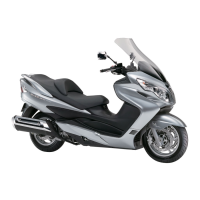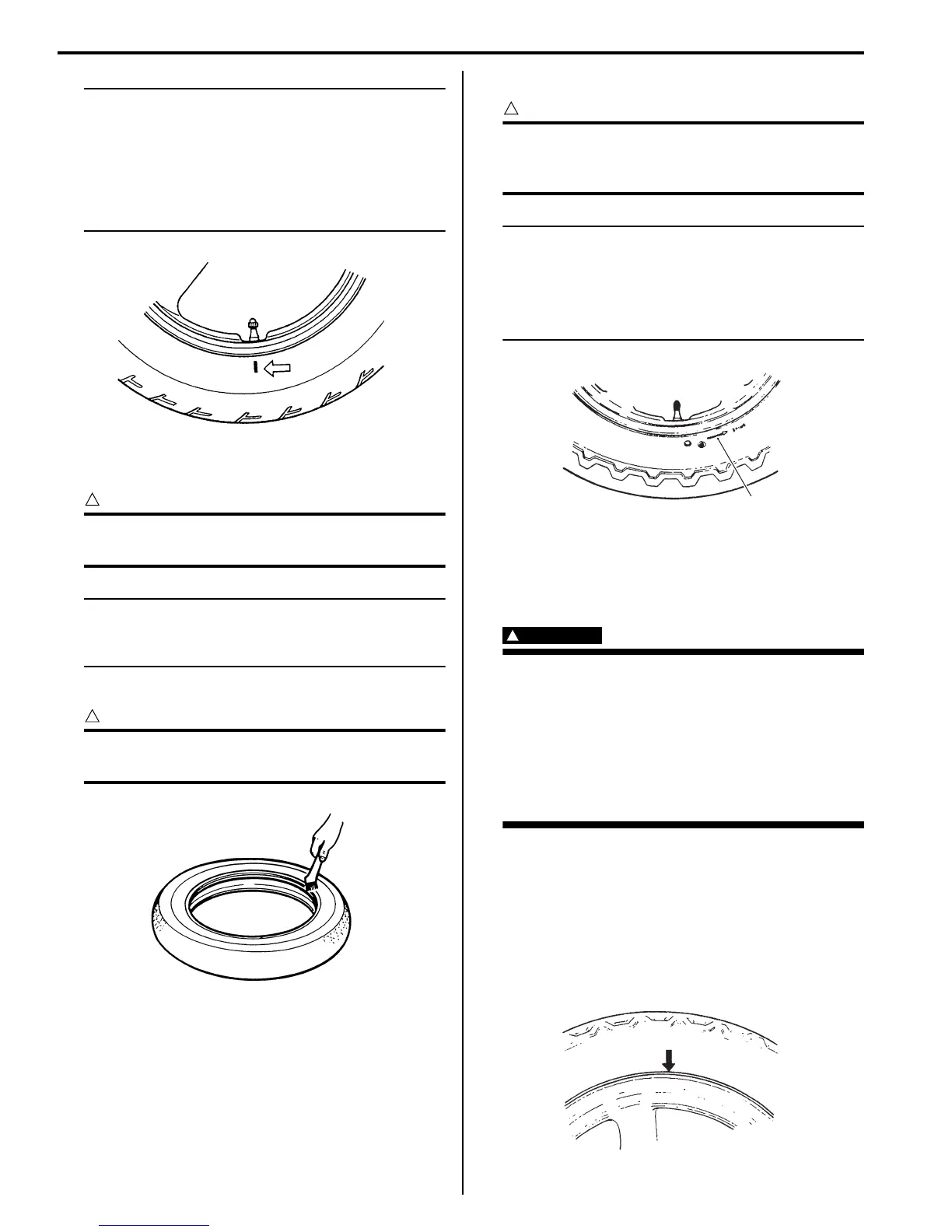2D-12 Wheels and Tires:
NOTE
When removing the tire in case of repair or
inspection, mark the tire with a chalk to
indicate the tire position relative to the valve
position. Even though the tire is refitted to
the original position after repairing puncture,
the tire may have to be balanced again since
such a repair can cause imbalance.
Installation
CAUTION
!
Do not reuse the air valve which has been
once removed.
NOTE
It is recommended to replace the air valve
with a new one together with a tire
replacement.
1) Apply tire lubricant to the tire bead.
CAUTION
!
Never use oil, grease or gasoline on the tire
bead in place of tire lubricant.
2) Install the tire onto the wheel.
CAUTION
!
For installation procedures of tire onto the
wheel, follow the instructions given by the
tire changer manufacturer.
NOTE
• When installing the tire, the arrow “A” on
the side wall should point to the direction
of wheel rotation.
• Align the chalk mark put on the tire at the
time of removal with the valve position.
3) Bounce the tire several times while rotating. This
makes the tire bead expand outward to contact the
wheel, thereby facilitating air inflation.
4) Install the valve core and inflate the tire.
WARNING
!
• Do not inflate the tire to more than 400 kPa
(4.0 kgf/cm
2
). If inflated beyond this limit,
the tire can burst and possibly cause
injury. Do not stand directly over the tire
while inflating.
• In the case of preset pressure air inflator,
pay special care for the set pressure
adjustment.
5) In this condition, check the “grim line” “B” cast on the
tire side walls. The line must be equidistant from the
wheel rim all around.
6) If the distance between the rim line and wheel rim
varies, this indicates that the bead is not properly
seated. If this is the case, deflate the tire completely
and unseat the bead for both sides. Coat the bead
with lubricant and fit the tire again.
I649G1240037-01
I649G1240038-01
“A”
I649G1240039-01
“B”
I649G1240040-01

